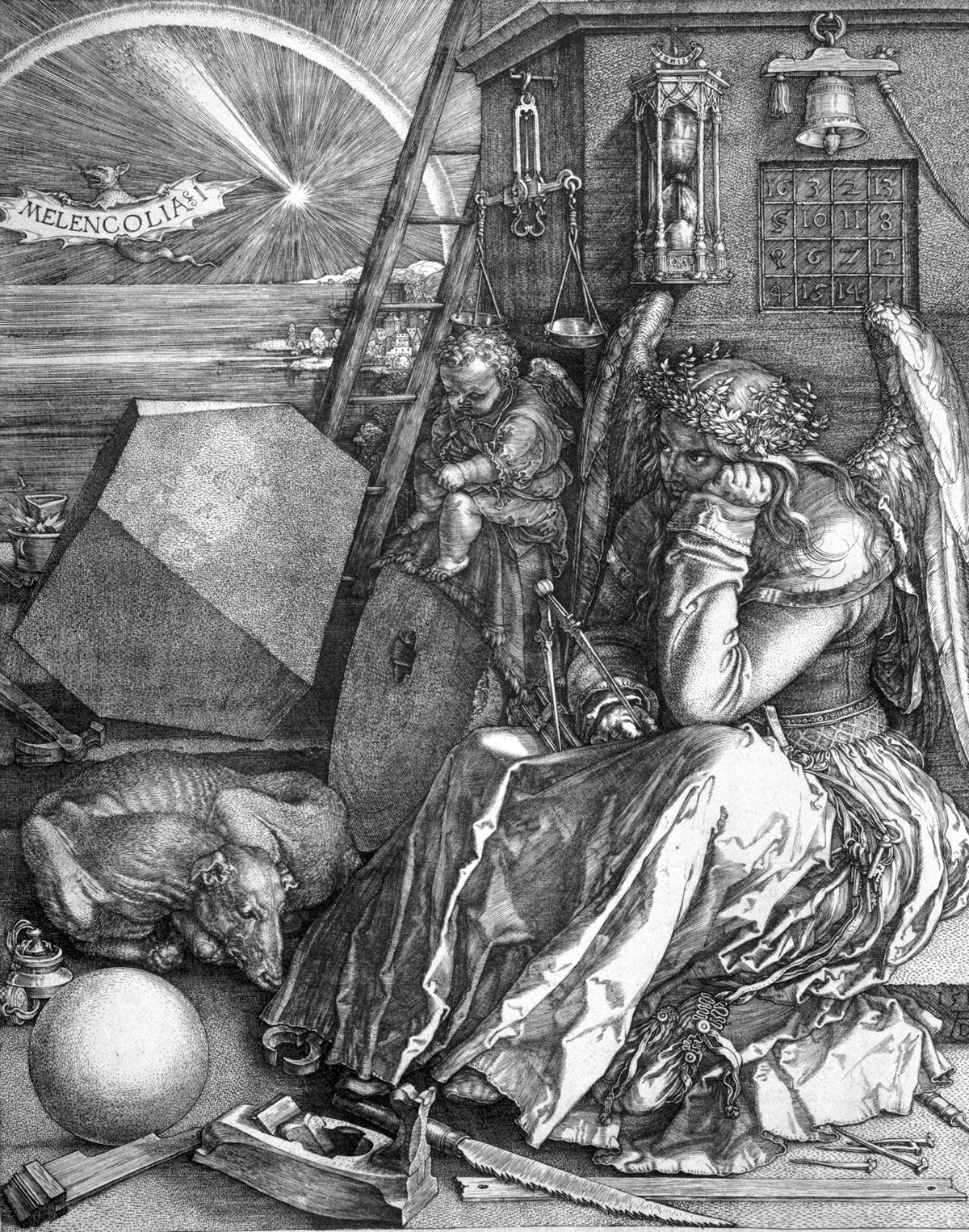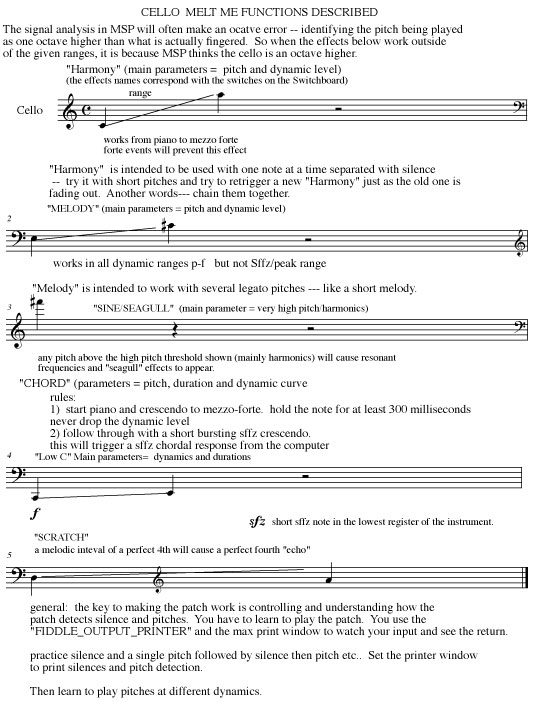View More
Melt me so with thy delicious numbers (duration 5-8') is written for solo cello, or solo violin, or solo viola with live interactive computer accompanist. The project was started in 2002, and as with all computer based music it is in continual revision.
The work is collaborative nature and involves significant interaction between the soloist and the composer to develop a particular performance of the work. Although the soloist has a great deal of playing freedom, the piece is not an improvisation, more a flexible environment with specific performance rules. The work is inspired by the famous A. Durer woodcut "Melencolia" from 1514 and the title is taken from Robert Herrick's poem, Charm me asleep, and melt me so...
Computers are not often thought of as being capable of contributing expressive musical responses in a live performance situation. Current AI technologies have failed miserably at this "Turing" test. My goal was to create a musical setting that places the electro-acoustic response on the same footing as a live musician who follows and accompanies a soloist.
The Max/MSP patch analyzes signal coming from a microphone attached to the cello, viola, or violin and then transforms the incoming data to produce a musical accompaniment. The computer program works to support and enhance the most minute temporal, spectral and gestural details of the performance. The cello version of the piece is dedicated to Danielle DeGruttola and the viola version is dedicted to Ellen Ruth Rose. Melt Me So… could not have been completed without generous support from the Center for New Music and Audio Technologies in the Department of Music at UC Berkeley with special thanks to Matthew Wright for computer programming support.
(The text that follows is adapted from a text by Beth E. Levy. The full text can be found in the liner notes of the Edmund Campion/SFCMP Outside Music CD, Albany Records Troy 1037)
There is a whiff of the grotesque in Campion’s Melt me so with thy delicious numbers... (2002). The work’s unusual surface features spring from the idiosyncratic vision of German artist Albrecht Dürer (1471-1528) and his engraving titled Melancholia in which, Campion notes, “a depressed angel contemplates the Universe with human tools of measurement.” Surrounded by a whimsical collection of figures–a cupid, an irregular geometric solid, a sheep, a sphere, a bell–the angel scowls at tools that mirror the human mind rather than the vastness of nature. “In much the same way,” Campion writes, “the soloist in Melt me so... is left to contemplate
in isolation the electronic echo that is a direct result of his or her own actions.” The work exists in versions for solo viola (as on this recording), solo cello, or solo violin, and it takes its title, with irony intended, from a text by Robert Herrick (1591-1674) called “To Music, to Becalm His
Fever.” Although the subject matter suggests loneliness, the compositional process of Melt me so... was intensely collaborative, as Campion observes: “I work closely with each performer to develop a personalized version of the piece.” In every case, the soloist, connected to a microphone, is aligned with a computer program that analyzes incoming sounds to enhance temporal, spectral and gestural details of the performance. “These are things we take for granted when listening and judging finely crafted instrumental music and
performance but seem to forget about when it comes to computer based music.... My goal was to create a musical setting that places the electro-acoustic response on the same footing as a live musician who follows
and accompanies a soloist.” The viola version of Melt me so... is dedicated to Ellen Ruth Rose and uses pre-recorded samples from composer-violist Kurt Rohde. The software was made by the composer, with help
from Matthew Wright.




